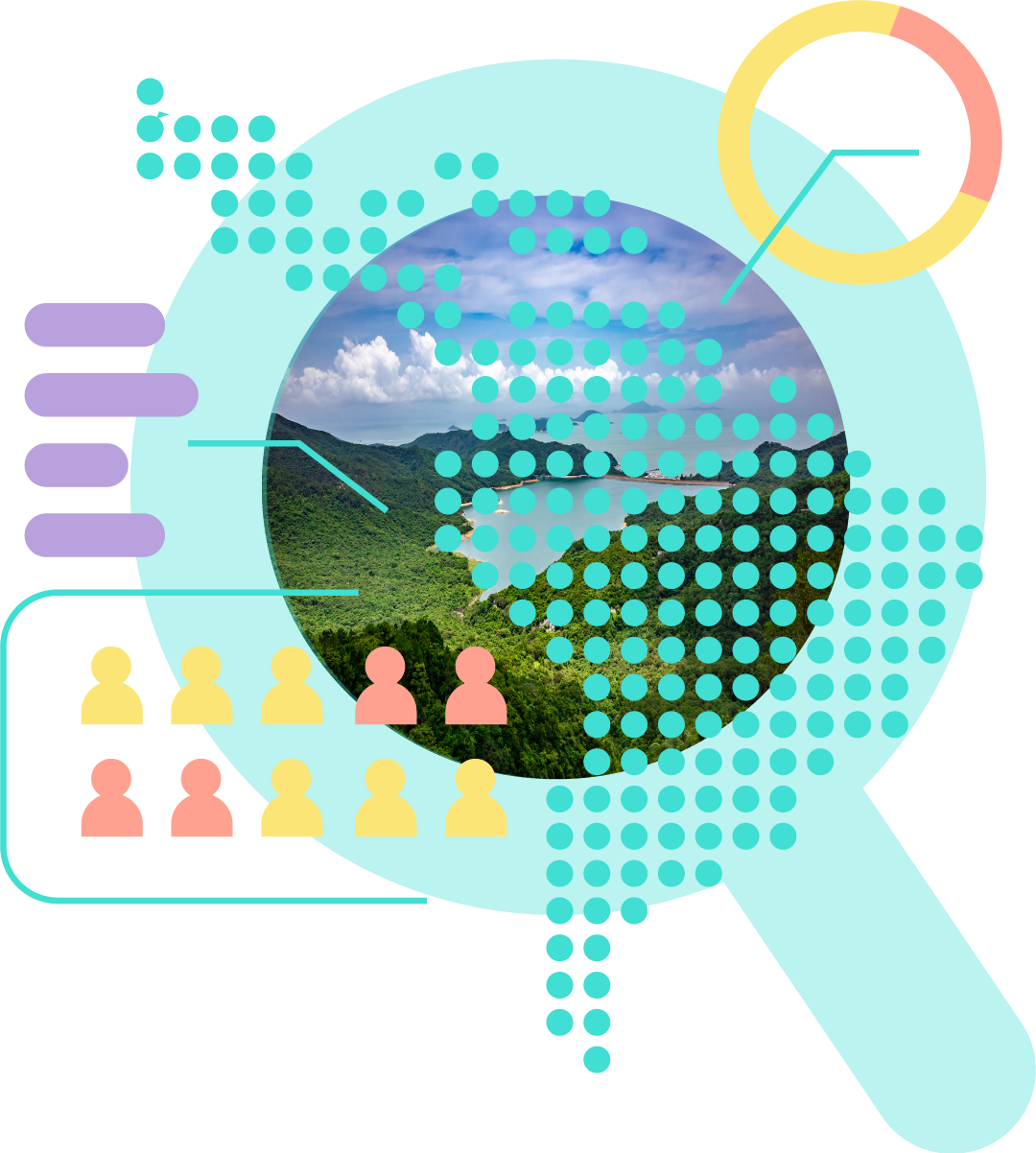Observing the steps towards resilience


A Climate Change Adaptation Observatory is a system of information designed to collect and analyze adaptation efforts in a specific geographic region. This observatory aims to foster collective reflection on the progress and obstacles related to adaptation in the region of Latin America and the Caribbean.
The main objective of the ROA is to facilitate decision-making aimed at advancing climate change adaptation processes in Latin America and the Caribbean.
Systematize and analyze relevant information to observe progress in adaptation in the region.
Map indicators covering key aspects for observing progress in adaptation, including thematic dimensions such as water resources, agriculture, and health, among others, as well as aspects related to the adaptation policy cycle: risk assessments, planning, implementation, monitoring and evaluation (M&E), and adaptation financing.
Communicate effectively and promote dialogue on information related to gaps, progress, and action-taking in adaptation in the region.

The Global Goal on Adaptation is a collective commitment under Article 7.1 of the Paris Agreement aimed at “enhancing adaptive capacity, strengthening resilience, and reducing vulnerability to climate change globally.” The GGA is conceived as a unifying framework that can drive political action and financing for adaptation. This involves setting specific and measurable objectives and guidelines for adaptation, as well as improving financing and support for adaptation in developing countries.
The establishment and implementation of the Global Goal on Adaptation (GGA) has faced complex challenges due to the localized nature of adaptation and the difficulty in reaching political consensus on issues like differentiated responsibility. While COP28 marked progress, significant gaps remain. The current framework lacks specific and measurable indicators to track progress toward global adaptation goals.
The work program from the United Arab Emirates (2023) to Belém (2025) aims to address these and other deficiencies and strengthen the GGA framework.
The COP28 decision (7/CMA.3) establishes a total of 11 targets to frame the GGA and its assessment: seven based on key themes and four related to the adaptation process.
The seven thematic targets highlight global priorities for adaptation, namely in the sectors of water, food and agriculture, health, ecosystems and biodiversity, poverty and livelihoods, infrastructure, and cultural heritage. However, while these sectors are important globally, their relevance varies across the world. Countries need to contextualize how these themes apply in their geographies.
The four process targets reflect the four dimensions of the iterative adaptation cycle, which themselves are aligned with the National Adaptation Plan (NAP) process: conduct impact, vulnerability, and risk assessments; plan for adaptation; implement adaptation plans and actions; and establish MEL systems for adaptation.
The COP 28 decision also includes cross-cutting considerations to implement the framework, including gender-responsive, participatory, and fully transparent approaches.
The ROA integrates the targets set by the UAE Framework for Global Climate Resilience as thematic and structural axes. Additionally, it includes the crosscutting aspects of gender-responsiveness, participation and financing.

Thematic axes Estructural axes Cross-cutting axes
In the last decade, various methods and data sources have been utilized to track adaptation progress, including systematic reviews, formal UNFCCC communications, and project documents from international funding agencies. Novel approaches like big data tools are also being explored.
Each method offers unique insights but also has limitations, indicating that no single approach is sufficient on its own. There is a valuable to fully explore the strengths, weaknesses, and applicability of these different methods, as well as their potential synergies.
In response, the ROA employs complementary levels of observation that encompass global indicators, national indicators, and records of subnational action. By combining and triangulating these approaches, a more comprehensive understanding of regional adaptation efforts can be achieved than what is possible with individual methods alone.

Mapping of global and national indicators
Pre-selection using criteria
Participatory workshops with stakeholders
Collection of information
Mapping of subnational action
Web Platform launch
Communication and dialogues
More than 200 sources of information were reviewed, which included:
Disclaimer: Some original information sources used in the Regional Observatory of Adaptation indicators may use data that has not been validated. UNEP is not responsible for the use of such information. Please always refer to the original sources.
National governments can benefit from using the ROA to make evidence-based decisions and report on the status of progress in meeting the Global Adaptation Goal within the framework of their national mandates (e.g. , National Adaptation Plans) and their international commitments (NDCs). Governements can also use the ROA as a guideline to align/design the MEL systems of ther national instruments.
Researchers can use the ROA’s data to produce articles on adaptation and resilience, study the progress of adaptation in the region, build arguments for negotiations on international climate change policy, identify gaps and information needs for climate adaptation in Latin America and the Caribbean.
Climate adaptation practitioners will have access to up-to-date information on subnational action in climate adaptation to strengthen the design and implementation of their actions, generate new initiatives and mobilize targeted resources for better effective climate adaptation. Practitioners can also use the ROA as a guideline to align/design their MEL systems.
The Regional Observatory of Adaptation promotes the principles for locally led adaptation, therefore, Civil Society is a key group of users and providers of the information made available by the observatory.
The ROA invites all national governments of the Latin America and Caribbean region to share information on their national and sectoral indicators that contribute to observing progress towards the GGA targets.
If you are involved in adaptation initiatives or projects at the national or subnational level, share your information with us. Help us recognize your contribution to the Global Goal on adaptation.